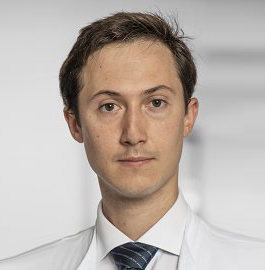Description
Influence of patient age and trauma mechanisms on clavicle fractures
BACKGROUND
Clavicle fractures can be caused by various mechanisms and their severity may be influenced by patients age and associated injuries. How the different energy of various trauma mechanisms changes the complexity of the fracture and of associated injuries in patients of different age has not yet been investigated. The primary goal of this retrospective cohort study was to evaluate the epidemiological characteristics of patients reporting clavicle fractures referred to a European Level I trauma centre and investigate the role of potential influencing factors as age, sex and trauma mechanism on clavicle fractures related patterns.
METHODS
Patients referred to a European Level I Trauma Centre with fractures of the clavicle were included in this study. Based on the mechanism of injury, patients were assigned to six subgroups related to the amount of energy transferred to the body at the moment of the accident (Universal Force Grouping, UFG) and classified in a dichotomic way into high- (subgroup III and V). Fractures were classified according to the Allman and AO classification and the presence of associated injuries was documented. Radiological measurements of clavicle length and width, length of fracture and the fragments were performed and normalized to the clavicle width. Shortening and displacement were calculated as described by Silva et al. (2013) and represented using this normalization method.
RESULTS
In total 281 patients reporting clavicle fractures were included, with a male predominance (females: 31 %; average age in general: 48 ± 20 years). In 263 cases the exact mechanism of injury was clearly documented.
The distribution of the trauma-associated energy is represented in figure 1, with type V (motor vehicle accident (MVA) with speed difference D > 30 km/h) being the most frequently observed. In total 40 % of accidents were high-energy accidents, with male patients being 3 times more frequently affected by high-energy accidents than female patients; patients experiencing a high-energy trauma were significantly younger than those experiencing a low-energy trauma (p = 0.034). Associated injuries were present in 71 % of the cases, most frequently involving a fracture of the ipsilateral ribs (38 %) and a pneumothorax or a haemothorax (19 %); trauma mechanism correlated to the presence of associated injuries (p < 0.001), with high-energy trauma patients showing a higher frequency of associated injuries.
Age and trauma mechanism did not show any significant relation with the fracture classification, with clavicle shortening and with fracture displacement. Only the presence of multifragmented fractures was found to be associated to a higher degree of shortening and fragment displacement (p < 0.001, p < 0.001).
CONCLUSIONS
First, this study confirms that age and sex have a significant impact on the mechanism of injury and quantifies the relevance of these variables: the odds of sustaining clavicle fractures after high-energy trauma increasing by 1.3 in patients aged 35-55 and dropping to 0.47 in patients aged ≥ 55, as compared to patients younger than 35 years and the women’s odds of sustaining clavicle fractures after high-energy trauma being 0.61 as to male patients. Second, it demonstrates that in a cohort with significant frequency of high-energy lesions (40 %) a high percentage of associated injuries is to be expected (71 %), warranting for a thorough examination and appropriate diagnostic for this subgroup of patients. Finally, it highlights that neither the age of the patients nor the mechanism of injury affects radiological characteristics of clavicle fractures such as fracture classification, clavicle shortening and fracture displacement, which appear to be only influenced by the presence of a fracture fragmentation.




